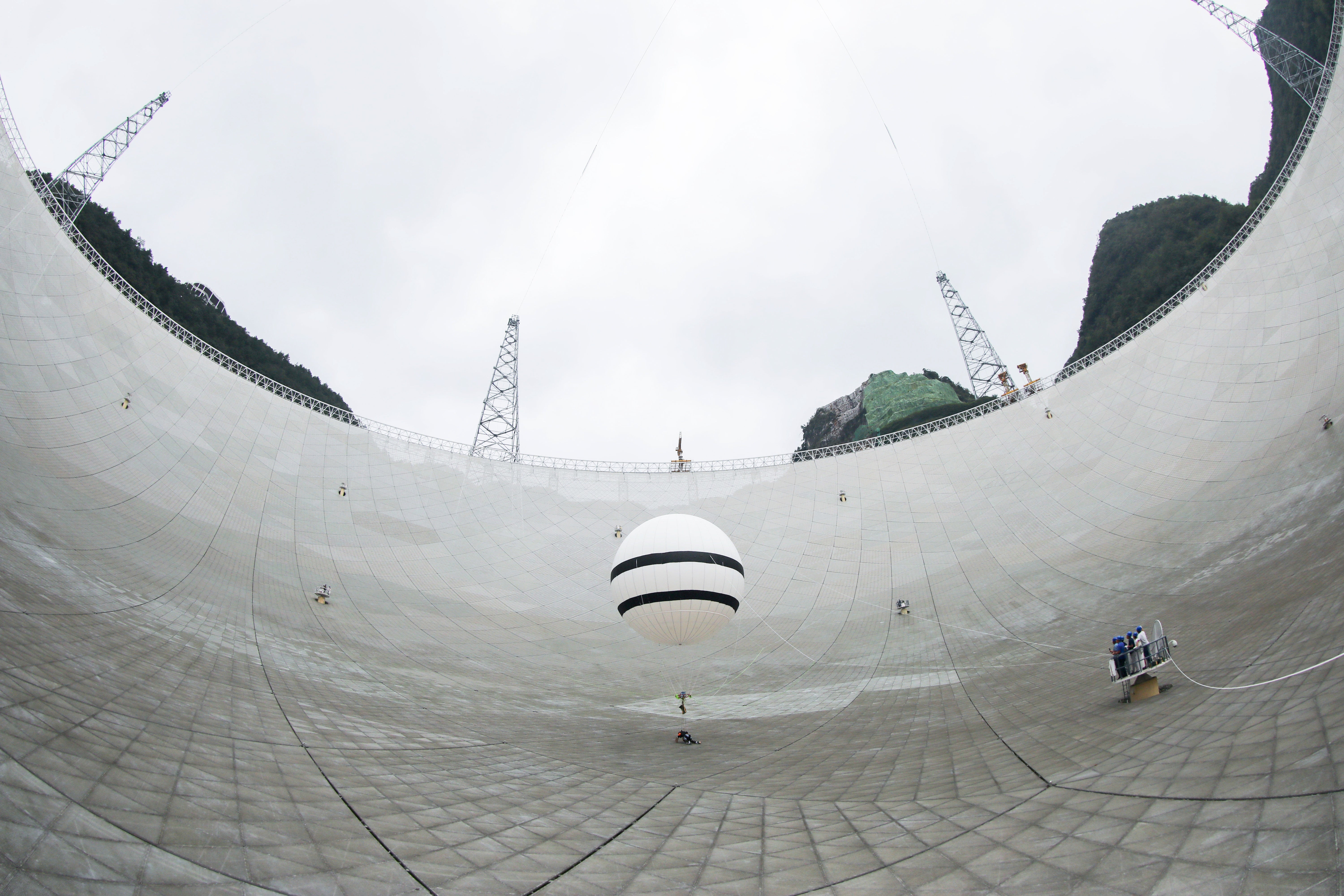Aperture Spherical radio Telescope

In China, a Telescope Offers Cosmic Data Amid Earthly Tensions
REPUBLISH
BY SARAH SCOLES
04.13.2021
The country’s Five-Hundred-Meter Aperture Spherical Radio Telescope will operate in a scientifically tense climate.
Top: In late March, the Five-Hundred-Meter Aperture Spherical Radio Telescope (FAST) became open to proposals from astronomers outside of China for the first time. Visual: Ou Dongqu / Xinhua News Agency via Getty Images
IN THE HILLS of China’s Guizhou province, a natural rock bowl cradles the world’s largest single-dish radio telescope. This instrument, called FAST — the Five-Hundred-Meter Aperture Spherical Radio Telescope — is, as its name suggests, 500 meters, or about 1,640 feet, across, a size that helps scientists detect more distant and fainter objects. And in late March, FAST began accepting scientific proposals from international astronomers for the first time.
The timing couldn’t have been better. In August 2020, a support cable on the next-largest telescope of this sort — part of the Arecibo Observatory in Puerto Rico, the only telescope of its class in the United States — snapped. Another cable followed a few months later. Then, in December, with a puff of dust, the massive instrument platform that once hung above the telescope crashed down, destroying the 305-meter dish.
That disappearance left astronomers like James Cordes of Cornell University scrambling. Cordes studies strange objects called pulsars, spinning cores that remain when giant stars explode at the end of their lives. The leftovers, if oriented the right way, beam radio waves at Earth, like very distant lighthouses. With Arecibo off the table, Cordes — and many other astronomers who used Arecibo to study stars’ evolution and discover distant galaxies — were left with one less option, and no option as sensitive, to do their work.
Until, that is, FAST opened to them, for the first time since its construction finished in 2016. After that initial completion, scientists and engineers spent years commissioning it and bringing it up to full scientific operation. They deemed it ready for proposals from would-be users in China early last year. “The timeline was very tight, and it was extremely difficult to get everything ready for opening to the world that time,” Keping Qiu, a professor in the School of Astronomy and Space Science at Nanjing University, wrote in an email to Undark. Qiu leads the committee that will evaluate the incoming ideas and added, “The FAST group worked very hard over the past year, and now the telescope is making the step forward” by opening up to the world.
More:
https://undark.org/2021/04/13/china-fast-telescope-open-for-business/
Thank you, Jilly in VA.


FAST, the World's Largest Radio Telescope, Zooms in on a Furious Cosmic Source
Staff member conducts maintenance of the reflector panels on the Five-Hundred-Meter Aperture Spherical Radio Telescope (FAST) with the help of a microgravity mechanism. This mechanism aims to help reduce the maintenance staff’s body weight to a value within the reflector panels’ range of durability using a helium-filled balloon that is 7.6 meters in diameter. Credit: Alamy
From article about the telescope, at:
https://www.scientificamerican.com/article/fast-the-worlds-largest-radio-telescope-zooms-in-on-a-furious-cosmic-source/


